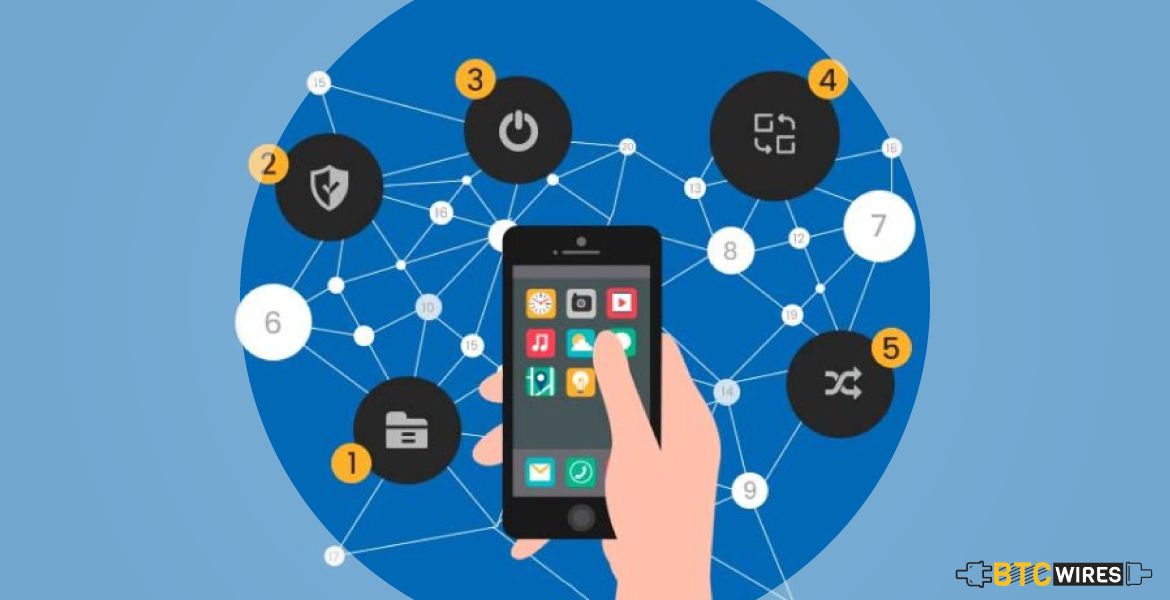We have explained a range of new concepts in crypto

We have explained a range of new concepts in crypto and blockchain in our beginner’s guides and this time, it is time to take a look at decentralized applications or dApps. Reading articles and news on blockchain technology must have at some point led you to hear of this interesting concept. If you’ve found it difficult to grasp all this while, worry not! Here is a simple made-easy guide to dApps for beginners.
What are dApps?
DApps stand for Decentralized Applications. These are nothing but digitally built applications that function over a blockchain network. These blockchain networks are securely encrypted using cryptographic algorithms and maintain a thoroughly decentralized character, with all transmissions occurring on a P2P (peer-to-peer) basis. The P2P model helps ensure the anonymity of participants as no one but the recipient and the sender can be party to an exchange. Moreover, no central authority can possibly control or intervene in the network, making sure that it is completely decentralized in character.
These dApps, like blockchain, are spread across a network of computers and transmit relevant services on a P2P basis. These apps do not fall within the ambit of any central authority’s control and hence are decentralized.
Properties of DApps
DApps have certain specific characteristics that set them apart from other types of applications and technologies. Here’s taking a look at some of them:
Decentralization
As dApps use technologies like blockchain to power their work, they have an inherently decentralized character which is a key feature of blockchain technology itself. No central entity can control the dApps and they are entirely spread across a distributed network.
Open Source
The codes of dApps are usually open-source in nature. This makes it possible for any developer to access it and work upon developing a new decentralized application which will benefit from the nature of this technology.
Consensus
Since dApps are essentially a distributed system where instead of a central authority, several different member computers together control how the operation of the dApp works, there is a need to build some sort of consensus and unanimity. Just like we have different kinds of consensus protocols used in blockchain, there are specific consensus mechanisms meant to ensure the computers the dApp is distributed across can take a consensus-based decision.
Incentivization
As these apps follow the general pattern of operation used by blockchain technology, they also provide incentives to those who contribute towards the efficient upkeep of the system by payment of crypto coins or tokens.
Examples of DApp Projects and the Role of Ethereum
Crypto enthusiasts are well aware of the fact that Ethereum is the blockchain of choice for a wide range of use cases. From hosting blockchain smart contracts to supporting decentralized autonomous organizations, Ethereum has often taken the lead in undertaking interesting projects and catering to diverse use cases. It has also fast made a foray into the field of dApps. Its dApps Golem, Melonport and Augur have been extremely successful, amassing over a million dollar in terms of market cap. The following are a couple of examples of these immensely successful projects:
Augur
Augur is meant to serve as a forecasting/prediction application with the help of the decentralized character of blockchain technology. It has been in beta testing for a while and is expected to revolutionize how prediction markets work and how forecasting can lead to profits.
Golem
This dApp derived its inspiration from the realization that many computers often lie idle because their owners or not using them. The concept of this dApp allows users (like CGI artists) to hasten their own work by renting idle computer resources from the owner of the idle computer. Easy pooling of resources is the key goal of this dApp.
Now that you have a general idea of dApps, you might be wondering how the blockchain technology underlying dApps work. To get a beginner’s insight into it, you may check out our article that gives you a layman’s guide to blockchain!

